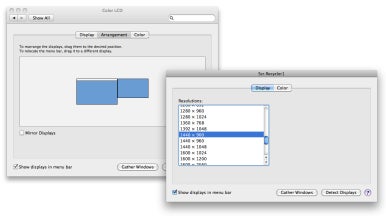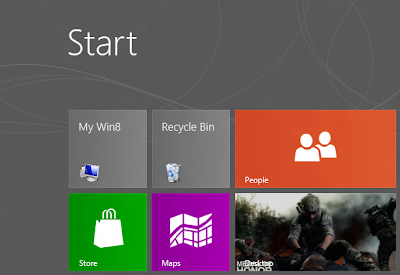

- #Screenrecycler for windows how to
- #Screenrecycler for windows for mac os x
- #Screenrecycler for windows movie
- #Screenrecycler for windows driver
By using the graphic cards of the networked computers, stability and speed are dramatically enhanced. As long as the xinerama extension is enabled, GNOME can use the entire desktop.Īn additional and different approach to multiple monitor systems involves using the monitors of networked computers to display the output of a central computer. This results in a 17600 x 6000 pixel display. Multiple university display wall projects use this capability, such as The LambdaVision display by the University of Illinois at Chicago's Electronic Visualization Laboratory, with 55 LCD monitors which are connected to 32 PCs. It is possible to have multiple monitors displaying as a single virtual desktop. Linux users may use Xdmx, which is an X Window proxy. This allows each machine to be doing a different task, freeing up resources. Similarly, software such as InputDirector or Synergy allows one to use multiple PCs, each with their own monitor or monitors, and transition from one to the other on screen edges as if they were one machine.
#Screenrecycler for windows for mac os x
I’m fiddling a little more before I buy ScreenRecycler (like, does it work better upon startup?), but it looks pretty promising.Software such as Maxivista for Windows and ScreenRecycler for Mac OS X let one set up multiple PC multi-monitor mode through virtual display drivers and client-side software. It was always hard to switch tuners anyway, at least with the Apple Remote.


It does, however, mean that it is a little cumbersome to switch between tuners (need to view both monitors, and do some more swizzling), but it’s workable.
#Screenrecycler for windows movie
This enables me to edit a movie while Jaq is watching another. This apparently has the side effect that quicktime movies will also play on this monitor, so that’s quite good.įinally, I made new Live TV and Recording open in a new window. I then went to the EyeTV preferences, and made sure the full-screen display went onto the “real” monitor. I made the ScreenRecycler display run in a higher resolution (1280x960, so that it fits nicely onto my external monitor on my laptop at full-size). I then loaded up the Displays preference pane, and moved the menu bar to the ScreenRecycler display. I was using ARD (and still do), which when I then reconnected showed me the whole desktop, with a menu enabling me to choose which display (or both) to view.
#Screenrecycler for windows driver
I’m hoping it’s pretty safe…Īfter running ScreenRecycler when the system has the driver installed, I needed to run JollysFastVNC to get ScreenRecycler to give me a second display. You may need to restart if this is the first time you have run it, as it installs some driver. Thus, with some swizzling, I can have the EyeTV full-screen display on the “real” monitor, and the desktop on the other one.ĭoing this means that I can happily edit a movie (say, to remove advertisements), whilst the TV still displays the live TV (or being viewed video). However, using ScreenRecycler, it seems like I can trick the Mac Mini into thinking he (his name is jens!) has two monitors. One annoying thing is that to set up a new smart playlist, or edit a movie, or do anything on the machine, whilst I can remote in and do stuff, this all displays on the TV. It runs EyeTV (by default), and can play movies stored on either a local FireWire hard drive, or a LAN server (running OpenSolaris, and using ZFS, incidentally). I have a Mac Mini that records all of my favourite programs (almost) automatically.

#Screenrecycler for windows how to
Or how to make a single-display Mac Mini Media Center even better.


 0 kommentar(er)
0 kommentar(er)
